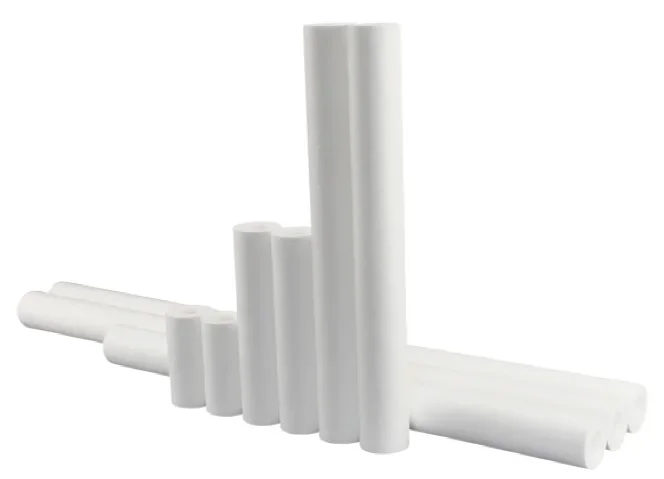In the oil and gas industry, the purity and quality of fluids are paramount, as contaminants can lead to equipment failure, increased maintenance costs, and reduced efficiency. Polypropylene (PP) melt blown filter elements have emerged as a popular choice for filtration due to their effectiveness, durability, and cost-efficiency. This blog post will guide you through the process of selecting the right PP melt blown filter elements for your oil and gas applications, ensuring optimal performance and longevity.
Understanding Polypropylene Melt Blown Filters
Polypropylene melt blown filters are made from a non-woven fabric of polypropylene fibers. The melt blowing process involves extruding molten polypropylene through fine nozzles into a high-velocity airstream, which then stretches the polymer strands into microfibers. These fibers are laid down on a moving conveyor to form a web, which is then bonded together by heat and pressure to create the filter medium.

Advantages of PP Melt Blown Filters
Chemical Resistance: PP is resistant to a wide range of chemicals, making it suitable for various oil and gas applications.
High Filtration Efficiency: The fine fibers create a large surface area, enhancing the filter's ability to capture particles.
Durability: PP is known for its strength and resistance to wear and tear.
Cost-Effective: PP filters are generally less expensive compared to other materials, offering a cost-effective solution for filtration needs.
Key Considerations for Selection
When choosing the right PP melt blown filter elements for your oil and gas applications, several factors must be considered to ensure they meet your specific needs.
Fluid Compatibility
The first step is to ensure that the PP filter is compatible with the fluids it will be filtering. While PP is chemically resistant, it's essential to verify that it can withstand the specific chemicals and temperatures present in your application.
Filtration Efficiency
The efficiency of a filter is determined by its ability to capture and retain particles of a certain size. PP melt blown filters are available in various micron ratings, which indicate the size of particles they can effectively remove. For oil and gas applications, it's crucial to select a filter with a micron rating that aligns with the required level of filtration.
Flow Rate and Pressure Drop
The flow rate is the volume of fluid that can pass through the filter per unit of time, while the pressure drop is the decrease in pressure across the filter. It's important to choose a filter that can handle the required flow rate without causing an excessive pressure drop, which could affect the system's efficiency.
Temperature Resistance
Oil and gas applications often involve high temperatures. Therefore, the PP filter must be capable of withstanding the maximum operating temperature without degrading.
Service Life
The service life of a filter refers to how long it can operate effectively before it needs to be replaced. Factors such as the filter's construction, the nature of the contaminants, and the operating conditions all influence service life.

Types of PP Melt Blown Filters
There are several types of PP melt blown filters, each designed to meet different filtration needs.
Standard Melt Blown Filters
These filters are designed for general-purpose filtration and are suitable for applications where the removal of larger particles is required.
High-Efficiency Melt Blown Filters
For applications requiring finer filtration, high-efficiency melt blown filters offer higher particle retention capabilities. They are ideal for removing smaller particles that could cause damage to sensitive equipment.
Absolute Melt Blown Filters
Absolute filters provide a precise level of filtration, ensuring that particles above a certain size are completely removed from the fluid. They are used in critical applications where the highest level of filtration is necessary.
Coalescing Melt Blown Filters
Coalescing filters are designed to remove liquid droplets from gas streams. They are particularly useful in oil and gas applications where the separation of water or oil from gas is required.
Installation and Maintenance
Proper installation and maintenance are crucial for the optimal performance of PP melt blown filter elements.
Installation
1.Orientation: Ensure the filter is installed in the correct orientation to prevent bypass and ensure proper flow.
2.Sealing: Use appropriate gaskets or seals to prevent leaks around the filter housing.
3.Support: Make sure the filter is adequately supported to handle the pressure of the fluid.

Maintenance
Regular Inspection: Regularly inspect the filter for signs of wear, damage, or clogging.
Cleaning: Some PP filters can be cleaned and reused, while others are disposable. Follow the manufacturer's guidelines for cleaning or replacement.
Monitoring: Use differential pressure gauges to monitor the pressure drop across the filter, which can indicate when the filter needs to be replaced.
Conclusion
Selecting the right PP melt blown filter elements for oil and gas applications involves understanding the specific requirements of your system, including fluid compatibility, filtration efficiency, flow rate, temperature resistance, and service life.
The Role of Polypropylene (PP) Melt Blown Filter Elements in Industrial Filtration Systems
